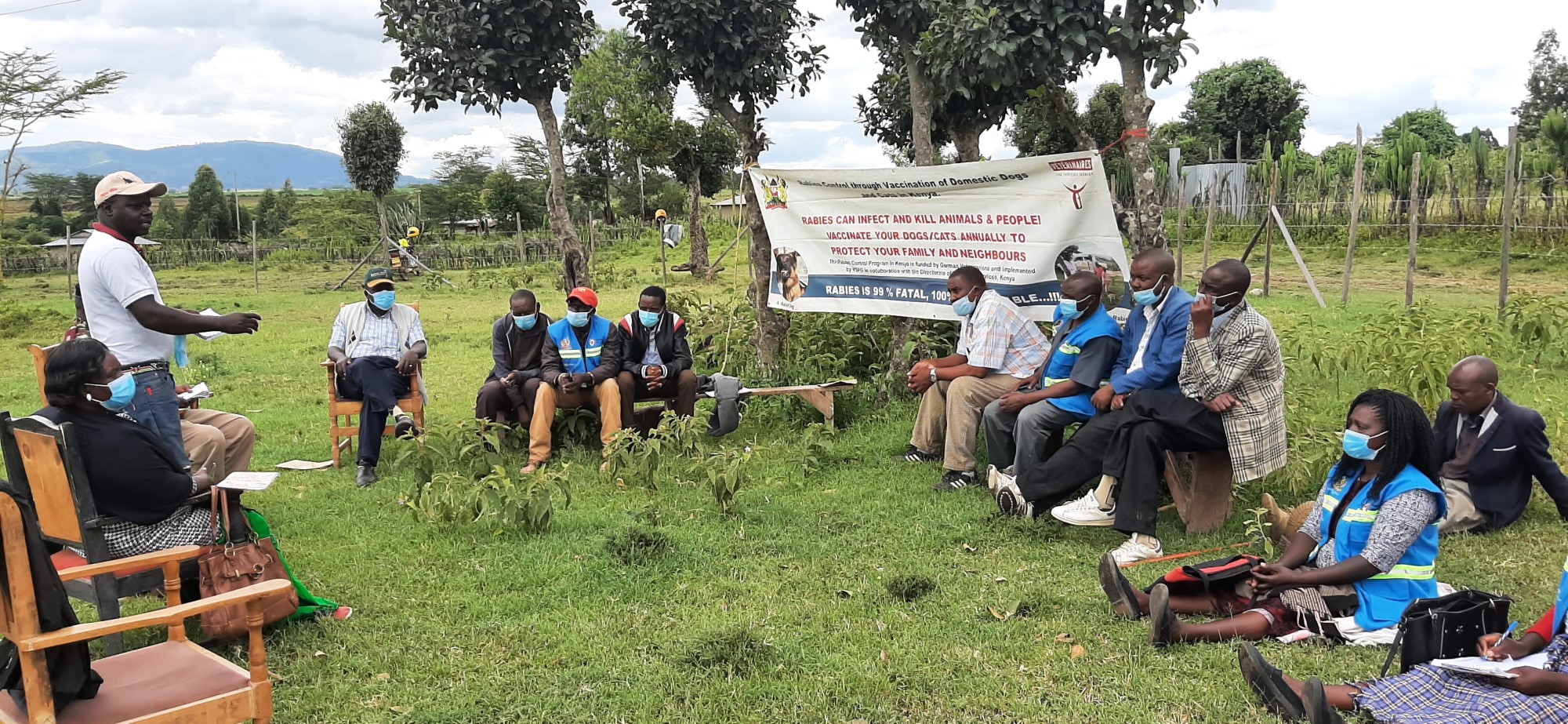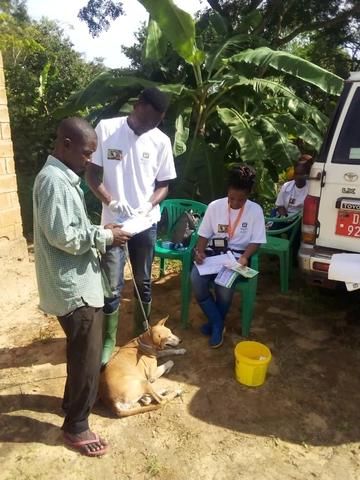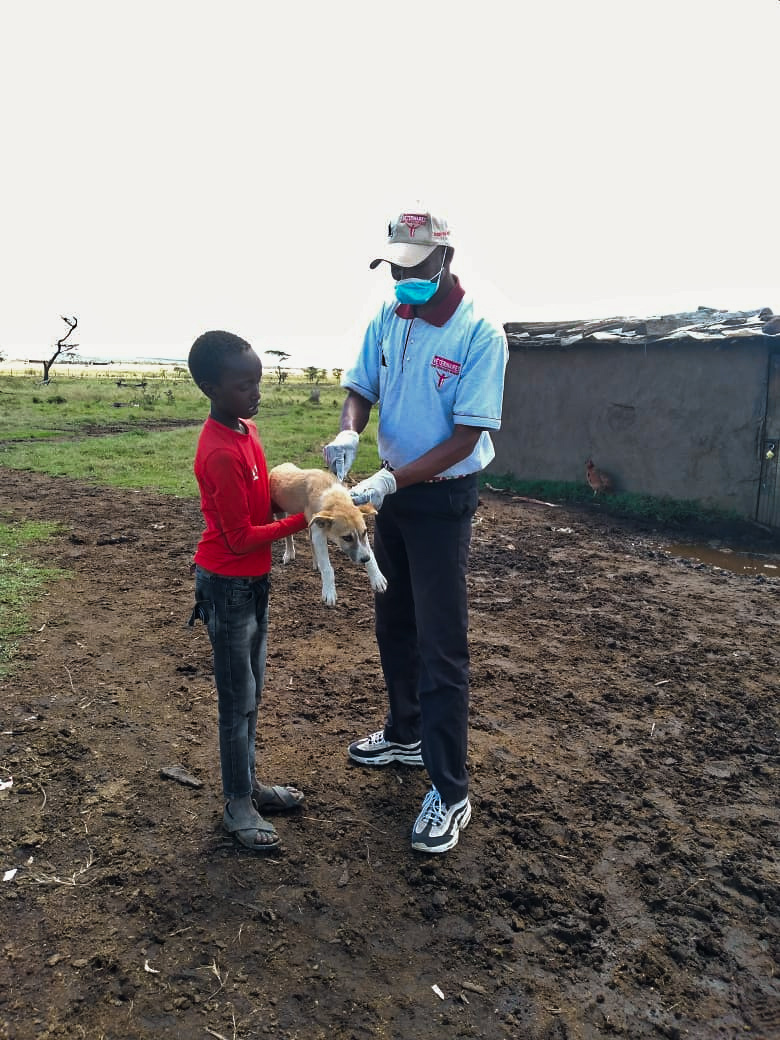More than 4 500 animals vaccinated and tracked by GARC’s partners, including the FAO and VSF-G, using the GARC app in East Africa.
GARC’s tools have been designed to be shared and used by any person or organization interested in rabies elimination. In fewer than 3 months, two of our many partners that we are collaborating with in East Africa have used the GARC app to track more than 4 500 animals!
GARC focuses on supporting and delivering sustainable and impactful rabies elimination efforts globally. To do this, we work with various partners to ensure collaboration and a wider reach beyond the scope of our own organization. While we tend to highlight our strong partnerships and support of national governments, we also believe that civil society and other partners play critical roles in rabies control and elimination – especially at the community level where the impact is the most noteworthy. In our experience, small demonstration projects tend to be catalysts for government uptake and the development of a national-scale rabies program. Typically, these demonstration projects are led and coordinated by civil society – dedicated NGOs, international partners and interested individuals who want to make a difference and generate change in their community and country.
While many organizations undertake mass dog vaccination campaigns, few have the capacity, funds, expertise, or time to accurately track their interventions. In-turn, this often means that donors are less likely to continuously support their cause, as it is difficult for the program implementers to demonstrate the impact of the support that they received. However, GARC has the skills, technology, and expertise to assist organizations in showcasing the impact of their efforts.
As you may be aware, GARC has developed the GARC app as part of the suite of surveillance tools available to support rabies elimination programs. More specifically, the GARC app lets people use the Rabies Vaccination Tracker (RVT) tool on their phones. This means that any partner, NGO, or rabies champion can easily track their dog vaccinations in the field with their mobile phone without constant internet access.
"Using the GARC App to record data on rabies vaccination campaigns has proven to be reliable, efficient, and simple to use." - Dr Ezra Saitoti, VSF-G
GARC has recently worked with two different groups in East Africa, supporting their dog vaccination efforts with the GARC app, enabling them to track their dog vaccinations and generate maps, graphs, and data in real-time. The best thing is that as more groups begin to use the app, the data for each country becomes stronger – helping national governments to drive their elimination plans.
GARC provided the GARC app (along with free setup and training) to each of the below groups, which means that these groups now have a vaccination tracking system at their disposal for all their future campaigns – all provided free of charge by GARC.
Tanzania:
A mass rabies vaccination and awareness campaign was undertaken in the Kisarawe district of Tanzania in May 2021. The project formed part of experiential learning for veterinary and human health university students and was implemented in collaboration with African One Health Universities Network (AFROHUN), FAO, WHO, the Tanzanian Ministry of Livestock and Fisheries, the Tanzanian Ministry of Health, the Local Government Authority, Ifakara Health Institute, and GARC. During the five-day campaign, more than 1 500 dogs and cats (more than 50% of the targeted population) were vaccinated against rabies, with the GARC app and GARC Data Loggers being used to track each vaccinated animal and monitor the campaign progress in real time.
The GARC app and GDL devices offered innovative, user-friendly and real time tracking and monitoring of the vaccination coverage, which is a very crucial attribute in any disease control campaign. - Dr Niwael Mtui-Malamsha, Food and Agriculture Organization (FAO), Country Team Leader at the Emergency Center for Transboundary Animal Diseases (ECTAD) in Tanzania.
Kenya:
Veterinaires sans Frontieres Germany (VSF-G) collaborates with the Governments, private veterinary service providers and conservationists in rabies control in Kenya. Over 10 years the campaigns have focused on the pastoralist counties of Narok, Kajiado, Machakos, Marsabit and informal settlements of Nairobi City, with high dog population and frequent interactions between dogs and humans. VSF-Germany and their partners undertook a vaccination campaign in Narok County, Kenya. The aim was to protect communities around wildlife reserves from rabies – with a special focus on protecting the rare and endangered wildlife species that inhabited many of these reserves, such as the African Wild Dog. In little over a month, the team had already vaccinated more than 3 200 animals. We know this as every vaccinated animal was tracked using the GARC app. The real-time updates, maps and graphs helped to identify missed areas and target future vaccination sites.
"VSF-G team has learnt and adopted the GARC app to capture all data on rabies vaccination campaigns, which is ideal in tracking and accurate reporting of rabies cases in rural and informal settlements." - Dr Maurice Kiboye, the Kenya Country Director of VSF-G


